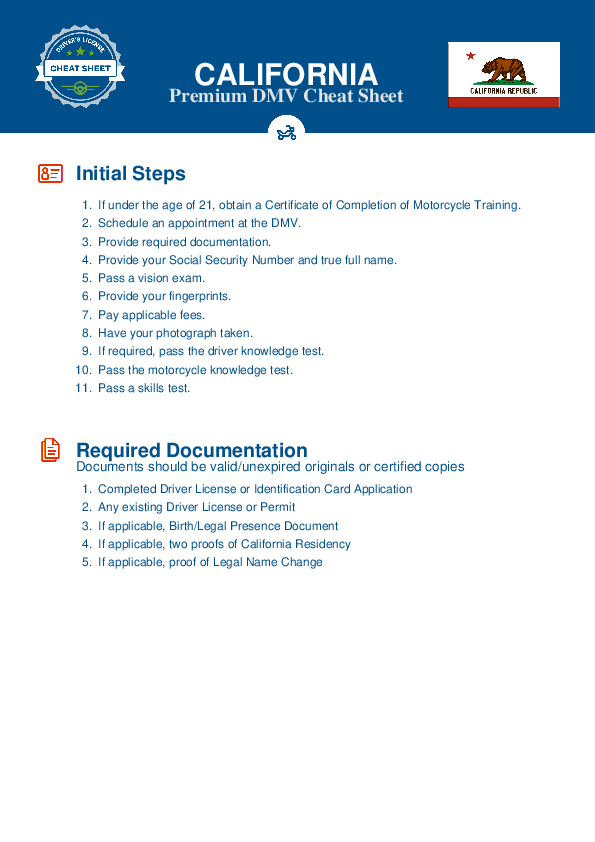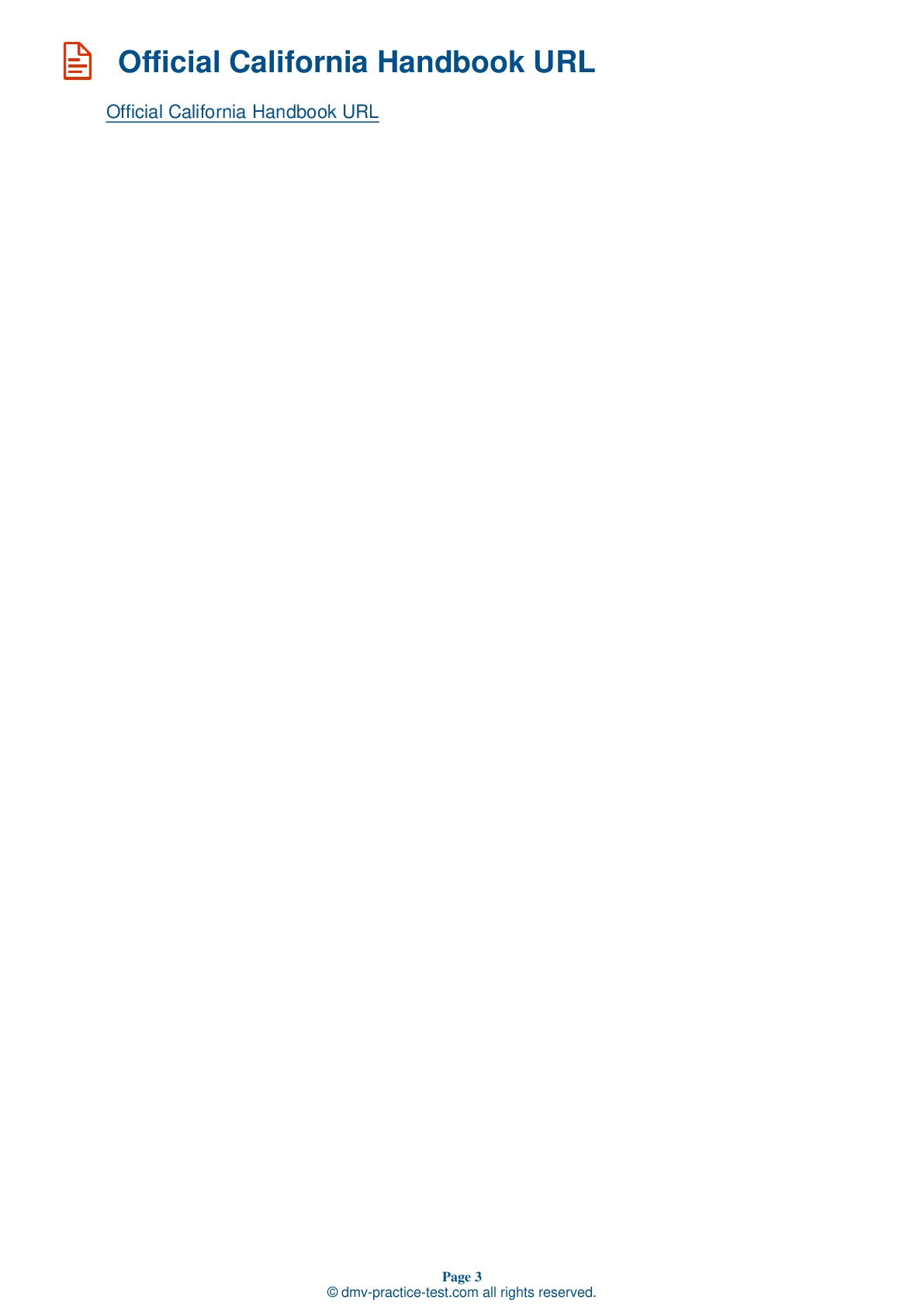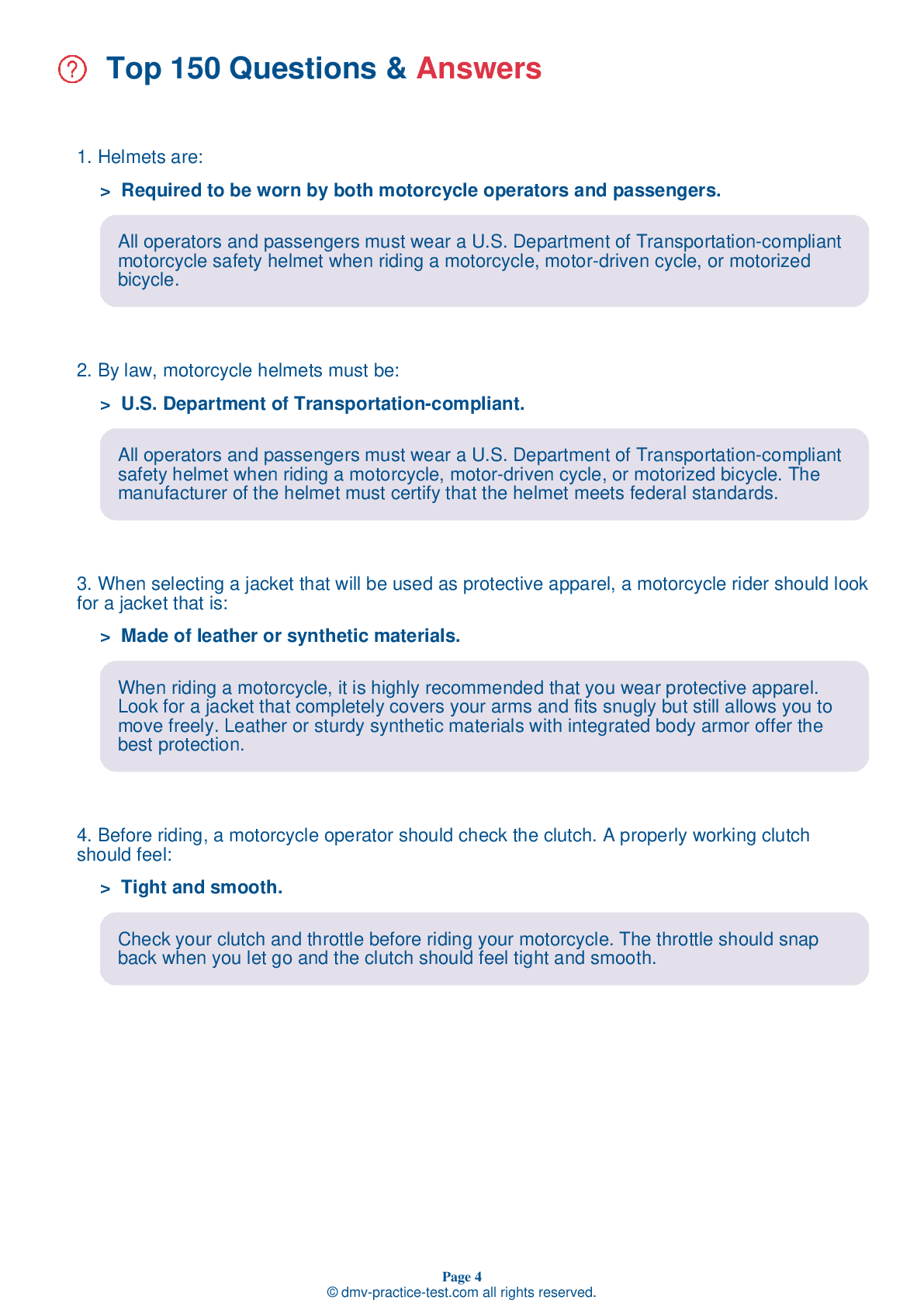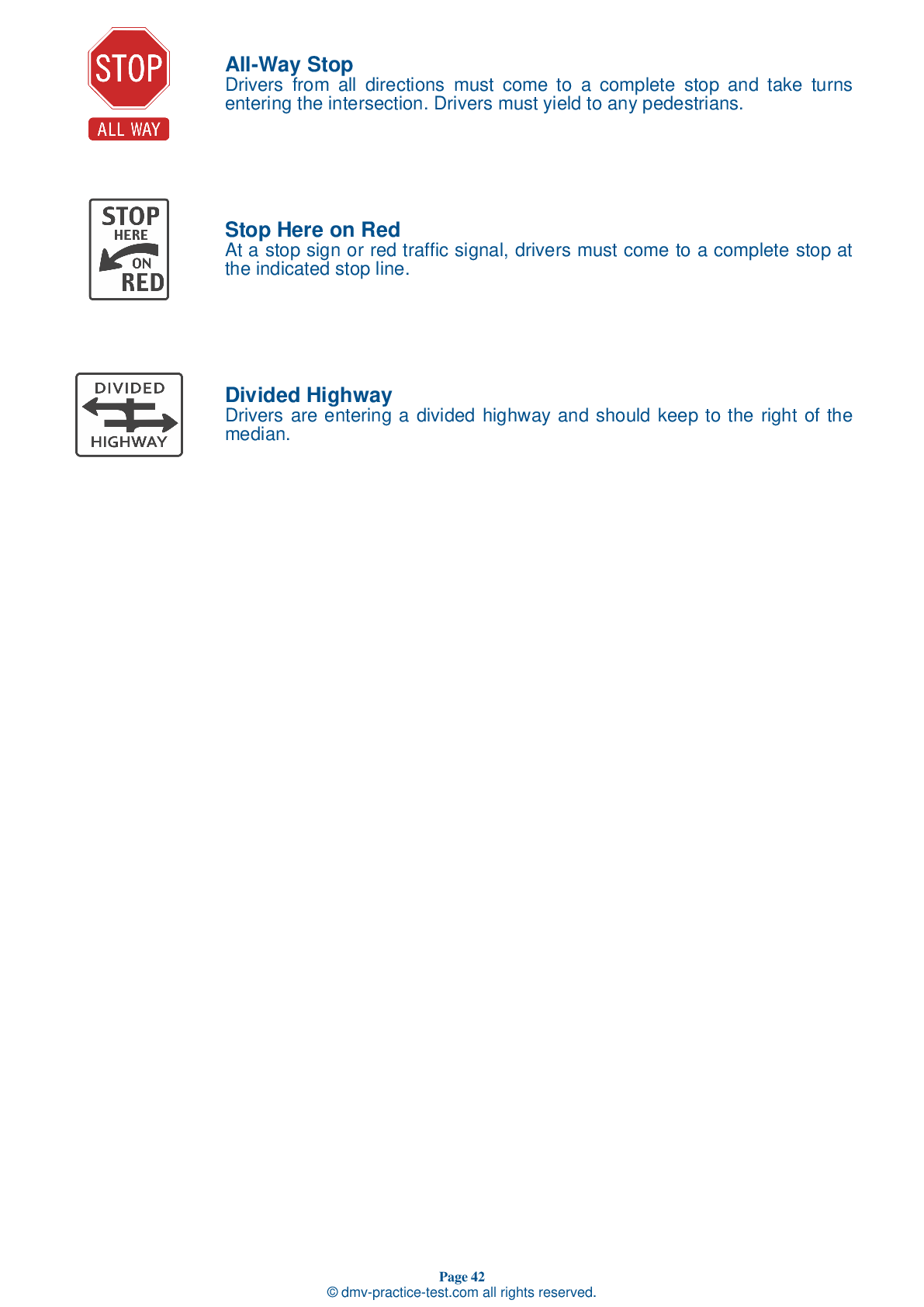Motorcycle Test | License CA 2025 | FREE Online Practice! #13
Take this FREE motorcycle test (license in CA 2025) to check your knowledge of the road rules. To improve your results, download a motorcycle handbook online, study theory, and practice for free on our website. Still worried about how to get a motorcycle license in California in 2025? Check our website for more sample tests, train as much as possible, and boost your grades!
1 . Helmets are:
All operators and passengers must wear a U.S. Department of Transportation-compliant motorcycle safety helmet when riding a motorcycle, motor-driven cycle, or motorized bicycle.
2 . You have an improved chance of avoiding serious injury in a crash if you wear:
Wearing a helmet is your best defense against injury while riding a motorcycle. Wearing a plastic, shatter-resistant face shield can help protect your face from injury in a crash.
3 . When involved in a reportable collision, an operator must report the collision to the DMV within ____ days.
When involved in a reportable collision, an operator must report the collision to the DMV within 10 days. Any collision resulting in injury or $1,000 worth of damage must be reported.
4 . When selecting a jacket that will be used as protective apparel, a motorcycle rider should look for a jacket that is:
When riding a motorcycle, it is highly recommended that you wear protective apparel. Look for a jacket that completely covers your arms and fits snugly but still allows you to move freely. Leather or sturdy synthetic materials with integrated body armor offer the best protection.
5 . There is the greatest potential for conflict between a motorcycle and other traffic:
Intersections present the greatest potential for conflict between a motorcycle and other vehicles. Motorcyclists should exercise caution when approaching an intersection.
6 . When a group of riders is passing another vehicle on a two-lane road, the riders should:
When a group of motorcyclists is passing another vehicle on a two-lane road, the riders should pass the vehicle one at a time. Each motorcyclist should complete their pass before the next rider's pass begins.
7 . A motorcyclist should attempt to avoid obstacles on the roadway. If avoiding an obstacle is not possible, the motorcyclist should:
If you are unable avoid an obstacle and must instead ride over it, slow down and approach the obstacle at as close to a 90-degree angle as possible. Rise slightly off the seat with your weight on the footrests to absorb the shock with your knees and elbows and avoid being thrown off the motorcycle.
8 . _______ of all motorcycle accidents involve motorcycle riders with less than six months of experience.
It is not uncommon for motorcycle riders to be involved in accidents. More than half of all motorcycle accidents involve motorcycle riders with less than six months of experience.
See the exact questions that will be on the 2025 California DMV exam.
99.2% of people who use the cheat sheet pass the FIRST TIME
Jeneen was tired of paying $5/gallon. She got herself a scooter that required the motorcycle license. She studyed the motorcycle test cheat sheet and passed her test the next day!
Christopher tells us how he knew nothing prior to obtaining the motorcycle study guide, and he only got one question wrong because he clicked on the wrong answer by mistake.



